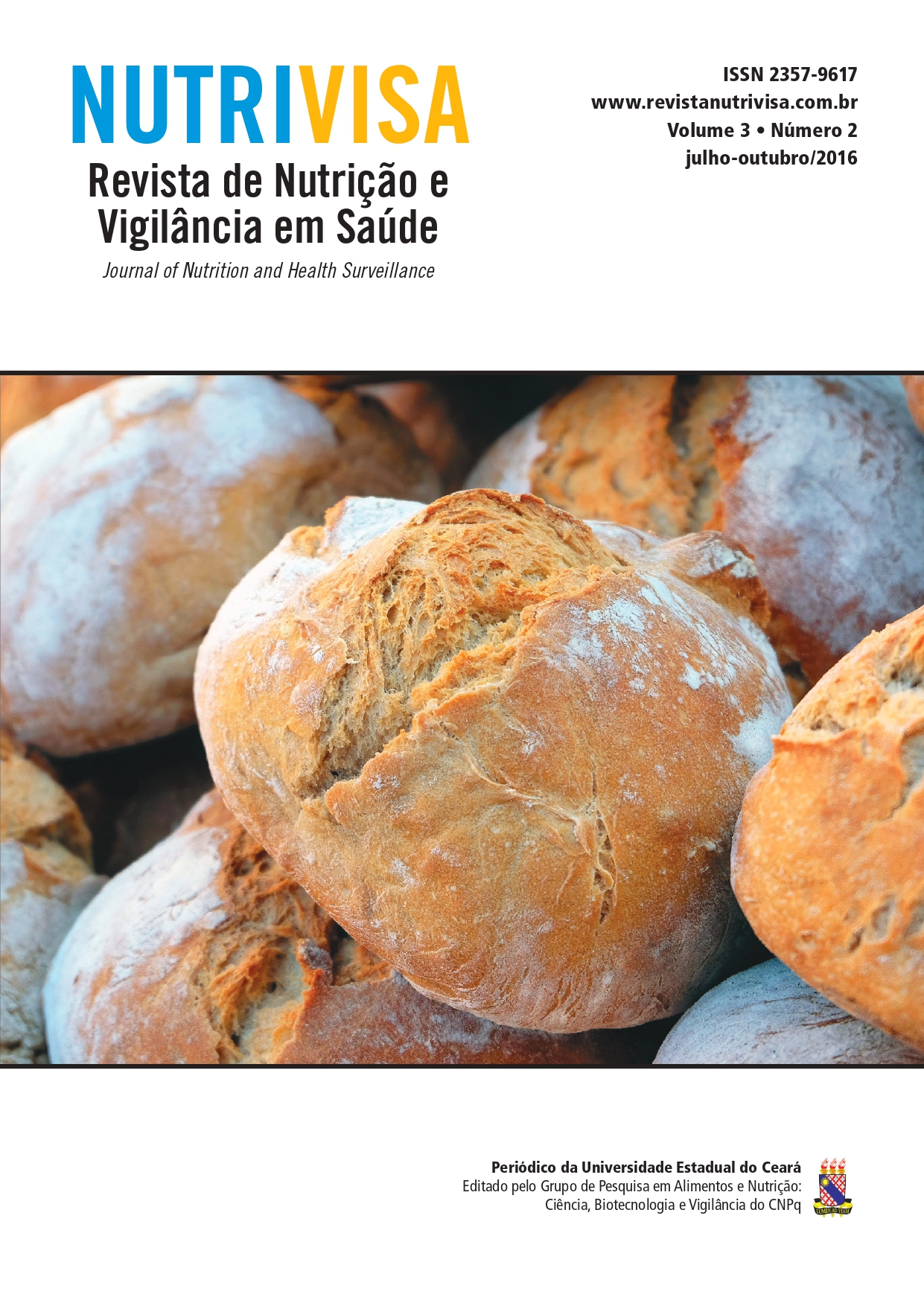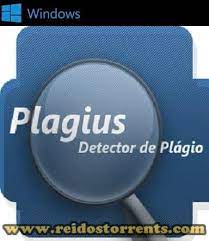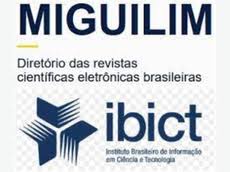Qualidade higiênico-sanitária de esponjas utilizadas em unidades de alimentação e nutrição em Fortaleza, Ceará
DOI:
https://doi.org/10.17648/nutrivisa-vol-3-num-2-fPalabras clave:
esponjas, unidade de alimentação e nutrição, coliformes fecais, contaminação cruzadaResumen
Esponjas usadas na higiene dos utensílios nas cozinhas das Unidades de Alimentação e Nutrição (UAN) podem transferir quantidades suficientes de micro-organismos para os alimentos, uma vez que elas entram em contato com diversos utensílios e equipamentos. O objetivo deste estudo foi avaliar a contaminação microbiológica de esponjas utilizadas em serviços de alimentação. Neste estudo, 10 esponjas foram coletadas em 10 UANs e posteriormente transferidas para o laboratório, onde foi realizada a análise dos micro- organismos coliformes fecais, Staphylococcus coagulase positiva e Salmonella sp. Das 10 avaliadas, 60% (n=6) estavam contaminadas com coliformes fecais e todas as esponjas que apresentaram contaminação tinham entre quatro e seis dias de uso. Já nas pesquisas para Staphylococcus e Salmonella sp., todos os resultados foram negativos. Conclui-se que contaminação pode ser de origem fecal. Sendo assim, é necessário um controle mais eficaz no treinamento e na supervisão das condições de higiene dos manipuladores nas UANs para evitar a disseminação dos surtos de doenças transmitidas por alimentos (DTAs).
Citas
BRASIL, Instrução Normativa no. 62 de 26de agosto de 2003. Oficializa os métodos analíticos oficiais para análises
microbiológicas para controle de produtos de origem animal e água. Brasília, DF. Diário Oficial da União, 18/09/2003.
ERDOGRUL, O.; ERBILIR, F. Microorganisms in kitchen sponges.
Internet Journal of food safety. v. 6, p. 17-22, 2005.
GREIG, J.D.; RAVEL, A. Analysis of foodborne outbreak data reportedinternationally for source attribution. Food Microbiol, 130, p. 77-87, 2009.
HILTON, A.C; AUSTIN, E.The dishclokitchen dishcloth as source of and vehicle for foodborne pathogens in a domestic
setting. Internacional. Journal of Environmental Health Research, v. 10, p. 257-261, 2000.
JOSEPHSON, K. L.; RUBINO, J. R.; PEPPER, I. L. Characterization and quantification of bacterial pathogens and indicator organisms in household kitchens with and without the use disinfectant cleaner. Journal of Applied Microbiology, v. 87, p. 737-350, 1997.
KUSUMANINGRUM, H. D. et al. Survial of foodborne pathogens onmethods of kitchen sponges. Food Control, v. 20, p. 310- 313, 2003.
OJIMA, M. et al. Hygiene measures considering actual distributions of microorganisms in Japaneses households. Journal Applied Microbiology, v. 93, p. 800-809, 2002.
OLIVEIRA, F.A. et al. Clonal relationship among Salmonella entéricaserovarEnteritidis involved in foodborne outbreaks in Southen Brazil. Food control. v. 20, p. 606-610, 2009.
PANZA, S.G.A. et al. Avaliação das condições higiênico- sanitárias durante a manipulação dos alimentos em um restaurante universitário, antes e depois do treinamento dos manipuladores. Rev. Higiene Alimentar, São Paulo, v.20, n.138, p.15-19, jan., fev. 2006.
PROENÇA, R.P.C. et al. Qualidade Nutricional e Sensorial na Produção de Refeições. Rev. Nutrição em Pauta. São Paulo, ano XIII, n. 75 p. 4-16, 2005.
ROSSI, E.M.. Avaliação da contaminação microbiológica e de procedimentos de desinfecção de esponjas utilizadas em serviços de alimentação. Dissertação (Mestrado em Microbiologia Agrícola e do Ambiente), Universidade Federal do Rio Grande do Sul, Porto Alegre (RS), 2010.
SHARMA, et al. Effective household disinfection methods of kitchen sponges. Food Control. v. 20, p. 310-313, 2009.
SILVA S.R.E.P. et al Análise quantitativa de microrganismos encontrados em chupetas. DiscSCientiae Saúde. p.57-64. 2009.
SOUSA, T.M., DEMARQUE, I.L.D., FERNANDES, F.M. Análise microbiológica de esponjas de poliuretano utilizadas em cozinhas domésticas. Revista Científica da FAMINAS – v. 9, n 1, JAN.– ABR. de 2013. Muriae/BH – MG.
SRIBERNICH, S.M et al. Avaliação microbiológica de esponjas contendo agentes bactericidas usadas em cozinhas de unidades de alimentação e nutrição da região de Campinas/SP, Brasil. Rev Inst Adolfo Lutz, v. 1, n. 66, p. 85-88, 2007.
TEBBUTT, G. M. Does microbiological testing of foods and the food environment have a role in the control of foodborne disease in England and Wales? Journal of Amplied Microbiology. v. 102, p. 883-891, 2007.
TEIXEIRA, S. M. et al. Administração Aplicada às Unidades de Alimentação e Nutrição. São Paulo: Editora Atheneu, 2006.
Descargas
Publicado
Cómo citar
Número
Sección
Licencia
Derechos de autor 2016 Marlene da Rocha, Marta da Rocha Moreira

Esta obra está bajo una licencia internacional Creative Commons Atribución 4.0.













